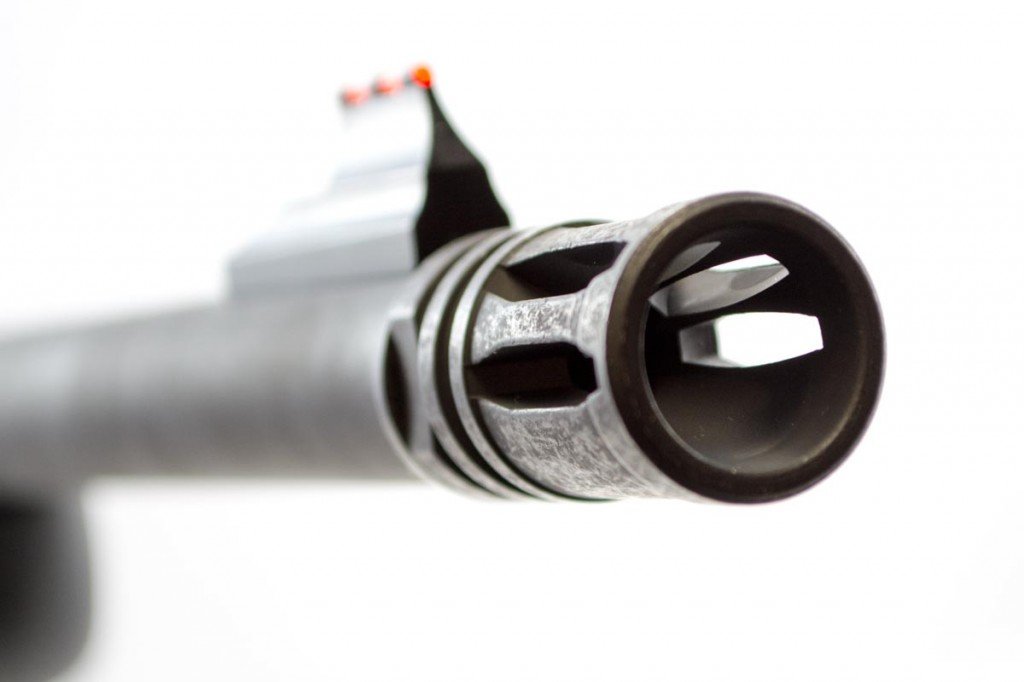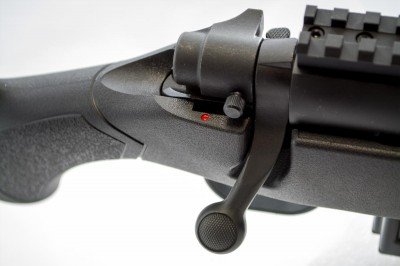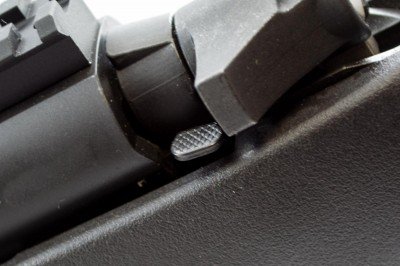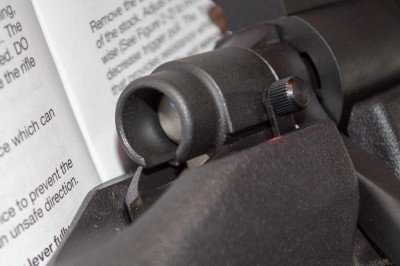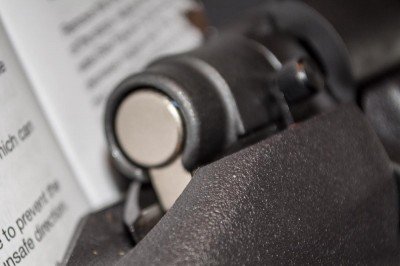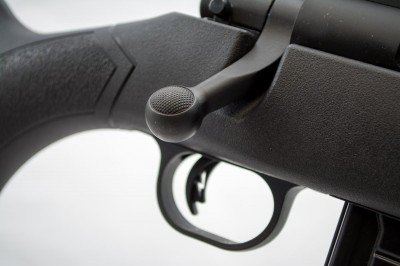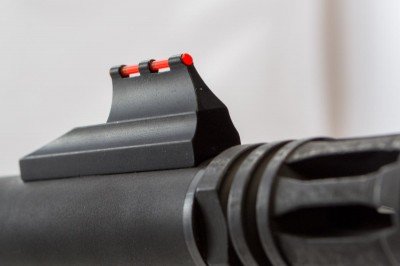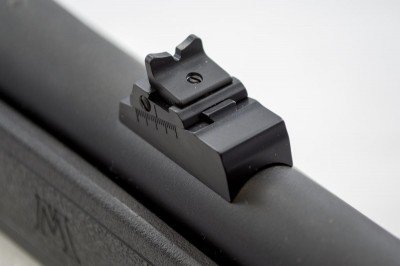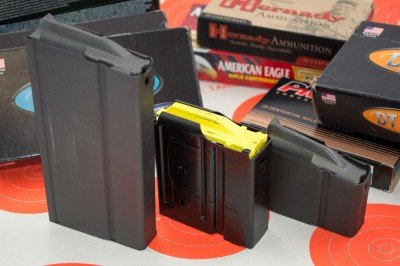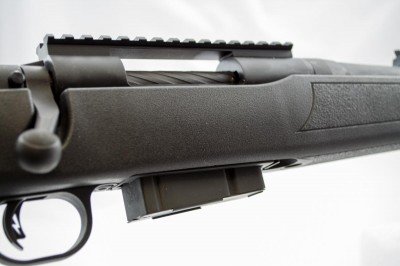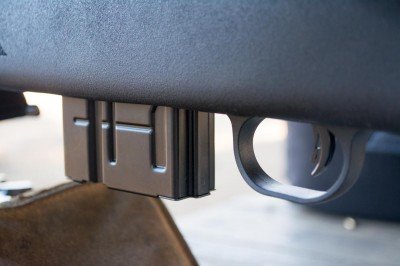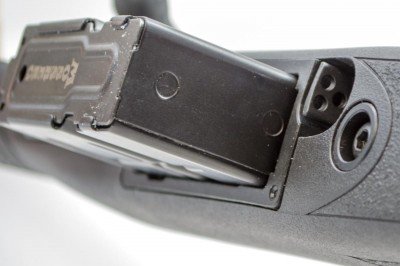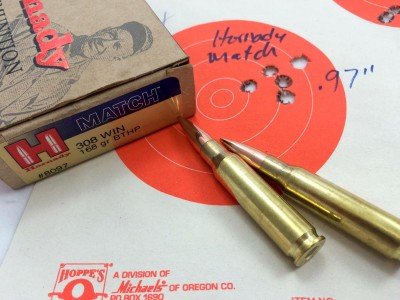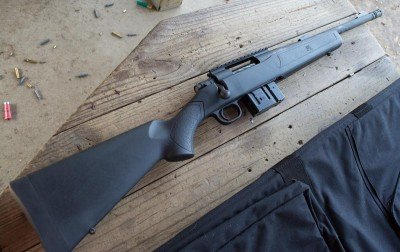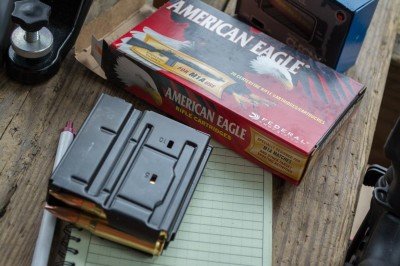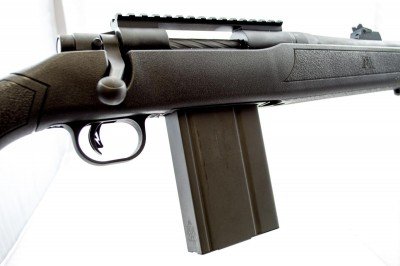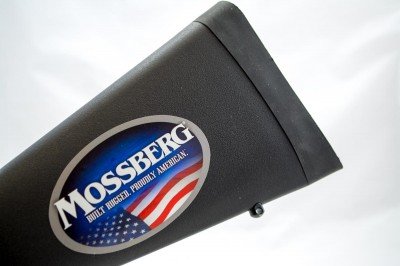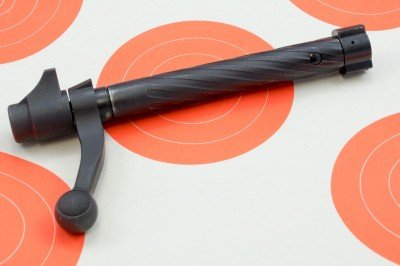There’s a unique appeal to a truly original firearm. While the Coonan
series of .357 autos are clearly derived form the single action family
tree, they are unique. These guns are big. They’re a bit boxier than a
1911, and they punch above their weight class.
And now the Classic Coonan comes in a smaller package. The compact is
a beast, and one that offers the firepower of the Classic Coonan for
those who want a serious concealed carry gun.
Features
- .357 Magnum
- Linkless Barrel 4 Inch Barrel
- Recoil Operated
- Pivoting Trigger
- Extended Slide Catch and Thumb Lock
- 4 Inch Barrel
- Fixed Night Sights
- 2 Magazines (6+1)
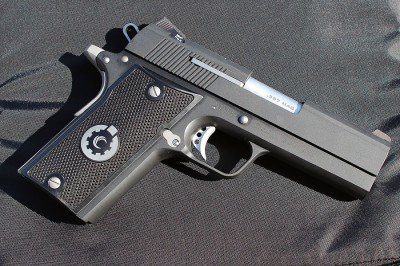
The 4 inch .357 is stout. This isn’t a pistol for those insist on light carry guns.
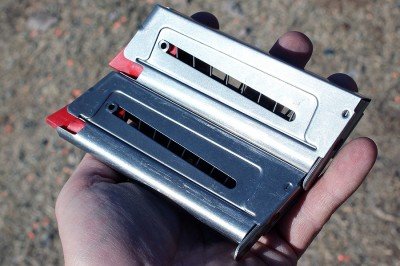
Two mags. Note the flared back and top.
Design
One of the most amusing ad slogans I’ve come across in the firearms
industry belongs to Coonan. “Looking for your first pistol?” the ad
begins. “This isn’t it.” Too true. But more on that later. Let’s get
into this thing a bit.
The Coonan line is built on the strength of the .357 round, which is a
rimmed round not typically associated with semiautomatic pistols.
Rimmed cartridges are typically harder to stack. The Coonan magazine has
a channel that flares out the back and top of the magazine. This allows
the magazine walls to support the rounds like a typical 1911 mag, while
the rims clear the narrow walls as they stack up and feed.
While there are identifiable elements of the classic Browning 1911, the Coonan moves away from the early 20
th
century modernist aesthetic. Most of the curves are gone. The 1911 is
built on clean lines and delicate curves. The Coonan is more linearly
angular. Even the frame and slide have a more slab-sided look.
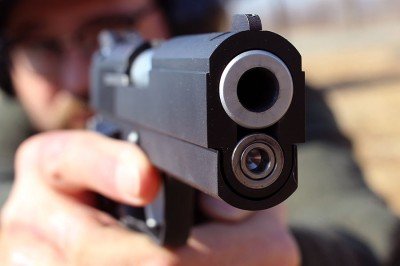
The bushingless barrel with its reversed plug.
The compact takes an inch off the classic Coonan. This 4 inch version
is designed for more practical concealed carry. It isn’t a subtle gun,
in any way, but it is more compact than its bigger brethren. This one
has a black DuraCoat finish. Coonan can do a variety of finishes, from
garish pink camo to stainless, and everything in between.
Taking the Coonan apart will baffle the beginner. It has a
bushingless bull barrel, and a reverse recoil plug. The linkless barrel
slides off easily, but then you have to push the guide rod out the front
far enough to pin it in place, which holds the spring pressure. After
that it is easy.
Assembly may be more tricky. The first time I put it back together,
the guide rod was protruding too far. I took it apart, looked at it
again, and made another attempt. After monkeying with the rod, it
clicked into place and the gun went back together perfectly.

From this angle, the gun looks larger than it is. And it feels much larger when you pull the trigger.
Shooting the Coonan
So what does a .357 do out of a 4 inch automatic? We put the 125
grain Hornady Critical Defense through the chrony and got some
consistent results. The Hornady ran under 1,500 feet per second–between
1,450 and 1,490. That’s still smoking for a 125 grain bullet, and put
the .357 close to the performance you’d expect from a lighter 10mm.
That’s the closest thing I can think of to describe the experience.
It is very similar to shooting a 10mm. The Compact has a good bit of
muzzle rise, which is seems natural for a gun this size that has this
much power. With that rise comes a loss of follow up speed. I can’t hit
double-taps with nearly the same split time that I can with a 9mm. It is
impossible.
Is that a fatal flaw? Hardly. I frequently carry a .357 revolver, and
it isn’t lightning fast either. There are fast pistols chambered in
easily controlled calibers. 9mm. .45 ACP, even. .40 S&W. But not
.357 or 10mm. But what you lose in speed you gain in power. That makes
the Coonan a solid choice for personal defense.
We ran a variety of .357s through the Coonan. .38 and .38+P works,
too, but reliability isn’t what it could be. The Coonan and its recoil
spring is designed around the punch of the .357, and the .38 just
doesn’t move the slide as fast. Springs are available for the .38. I’d
consider them for live fire range time, but never for carry. If you are
hesitant about the .357 in a compact carry gun, this isn’t the pistol
for you.
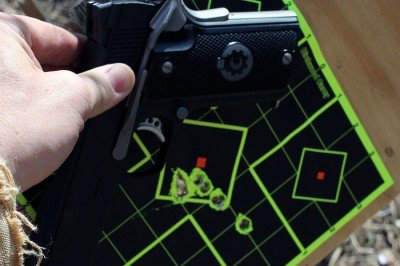
Here you can see how the groups are approaching one inch, and then fall out.
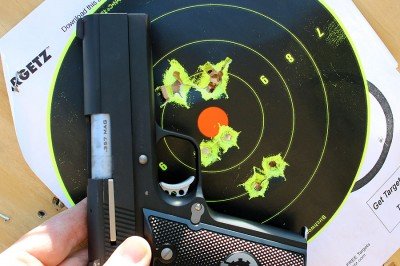
I
did more convincing work with the Coonan when I wasn’t trying to punch
out a tight group. These pairings are all double taps form 25 yards.
Accuracy was reliable. As this isn’t a target gun, I wasn’t expecting
to see super tight groups. After the first few magazines, I couldn’t
complain. I found myself dropping a round or two from each mag, which
would destroy a tight group, but that wasn’t the Coonan’s fault. I blame
fatigue. This is a gun that will wear you down. I like to shoot a
hundred rounds or more through any of our review guns before I ever
begin making decisions about how much I like it or dislike it. And after
100 rounds of .357 (on top of whatever else I’d been shooting at the
range that day), I was feeling the recoil.
That alone may be reason enough to keep the Coonan out of the hands
of the timid. Recoil aversion. I shoot a lot. I pull the trigger too
hard sometimes (o.k., frequently), but I don’t shy away from recoil. Yet
by the end of the first range day I could feel myself tightening up in
anticipation of the coming shot.
All of which is to say that this is shaping up to be a badass carry
gun. It is also a gun I’d want to practice with regularly. I’ve had the
Coonan in house for a month now, and I take it to the range every time I
go. The round count is growing steadily, but more slowly and
methodically than is typical for me.
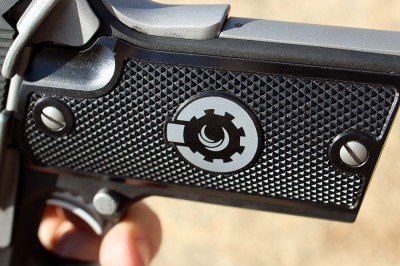
The aluminum grips are milled and the texture is superb.
Ergonomics
Did I mention that the Coonan is a bit boxier than the 1911? If you
look at the grip, you’ll see how it looks less trapezoidal. The grip
maintains its width instead of having a flared base (like a traditional
1911). This is due, in part, to the length of the .357 cartridge. That
round is longer than a .45 ACP. It is thinner, too, so the single stack
mags have a different feel.
The grip itself feels slightly larger than that of a 1911. Yet the
grip is somewhat rectangular, and not fat/round like some big
double-stack grips. This helps with point shooting, or so I’m told. With
wide flat sides, there’s no confusion about which way the gun is
pointing. This is a bit hard to describe, and I’ve never tested the
concept. The idea is that the flat sides on a gun like the Coonan point
the way toward the target, and you pick up on that (however
unconsciously) the moment you grip the gun.
And the gun kicks more. If you have really small hands, this gun is
going to feel challenging. I’ve got smaller hands for a man my size, but
they’re certainly not small. The Coonan fits me like a glove. The width
of the grip is ideal for controlling recoil.
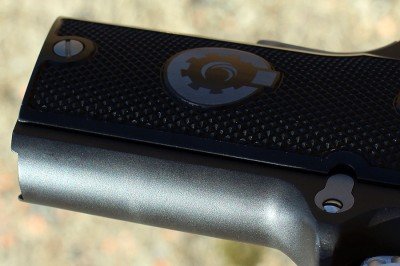
The smooth back straps may allow for easier transitions to the mag release and slide stop.
What would help? This one doesn’t have checkering on the front strap.
It feels very good without it, but a good checkering would make this
gun even easier to control. The teeth in the milled aluminum grips are
fierce, though, and that provides a sufficient grip. I’ve not shot a
Coonan with checkered straps–and I could see how more aggressive texture
would keep you from being able to move your hand around the wide flat
grip to reach the slide drop or mag drop. So perhaps it is a compromise.
Controls
The trigger on the Coonan is crisp, though it too is a departure from
the traditional 1911 design. Most 1911 triggers slide straight back.
This one is hinged, and rocks back and up. There is a very slight
take-up before a 4 pound break. In keeping with the design, that 4 pound
pull is just heavy enough to keep you from dropping the hammer
accidentally. As this is a gun meant for defensive use, I can imagine a
scenario where my finger was on the trigger before I’d decided to shoot.
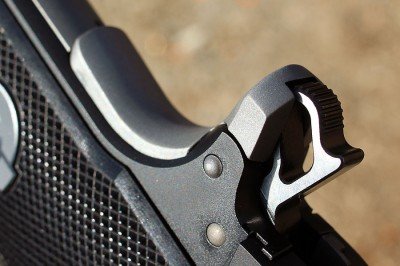
The black DuraCoat is offset by the matte grey controls.
The safety and slide drop are over-sized very easy to reach. The
beaver-tail safety doesn’t have a huge bump at the base, but it doesn’t
need it. There’s no way to grip this gun well that doesn’t disengage
that safety.
The big questions
I’m going to anticipate some of the big questions that will surely crop up in the comments below. So here we go…
#1. Is it reliable? Yes. The Coonan is recoil operated, and there’s
plenty of recoil. Extraction was enthusiastic. Shells were kicked clear.
During the entirety of this review, we only had one stoppage, and it
was a failure to extract.
#2. 6+1? Most snub-nosed revolvers hold at least 5 rounds. The Coonan
mags hold 6. With one in the chamber, you’ve got a bit of an advantage
over your average revolver. The real advantage comes from the extra mag.
While there may not be an overwhelming ammo supply, mag changes are as
easy as they are on any single action. If you do have to reload, the
Coonan has a distinct edge.
#3. Control? This is where we come back to that slogan. Looking for
your first pistol? This isn’t it. I’m not going to suggest that Coonan
is exploiting the gratuitous nature of the .357–but they’re not shying
away from the fireballs, either. Their site prominently features images
of flames exploding from the barrels. The Coonan is loud. It makes a big
fat ball of fire. It kicks. But it is controllable. I wouldn’t suggest
it for anyone who is just learning the ropes. I wouldn’t recommend it
for anyone with diminished hand strength, or small, delicate hands.
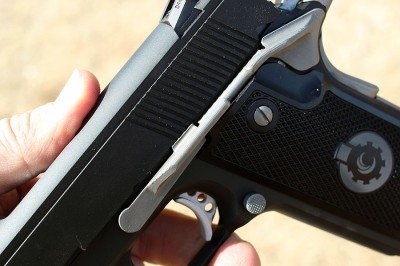
Extended slide drop and safety.
#5. Is this thing just a Novelty? Far from it. I had a long
discussion this morning with another one of the GunsAmerica writers and
he (somewhat lovingly) called the gun a novelty. Then he quickly
retracted the statement. True, the Coonan is a beast. Shooting the .357
from the short 1911 platform is something of a novelty at first. But
this isn’t that different from the 10mm, and I’d never call those
novelties.
In the end…
I’m a fan. This is my first date with the Coonan. And after more than
500 rounds, I don’t have anything to criticize that isn’t based
entirely on personal preference. I’d change out the rear sight–but I
think that’s pretty much the only thing I’d mess with.
I’ll tell you what I expected. I thought sure I’d have more
consistent failures as the Coonan tried to extract the rimmed cases. I
thought I’d find the kick of the .357 so sharp that I wouldn’t consider
this for practical concealed carry. Not so. The reliability was
excellent. The kick is intense, but manageable. And now, having roughed
it up a bit, I’ve got to find a perfect holster and carry this thing.
The Coonan Compact has an MSRP of
$1,975.00. It
sells for a bit less. There are numerous custom options available.
Almost anything you could think of for your traditional 1911 platform.
And Coonan sells lighter springs for those who want even more reliable
performance from the .38. Check them out. It is worth a trip to the
Coonan page just to see some of the available paint jobs.
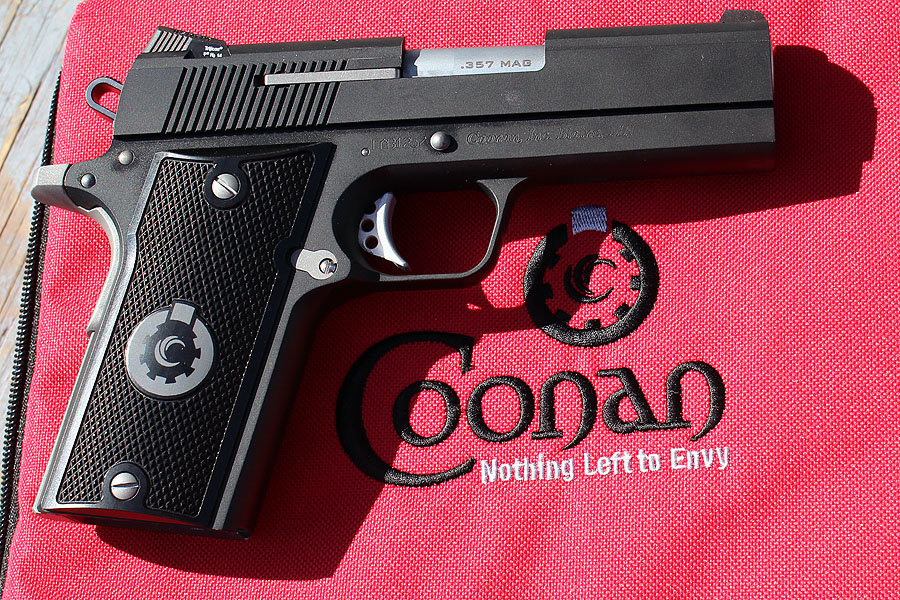
No mistaking what’s in this pistol case.
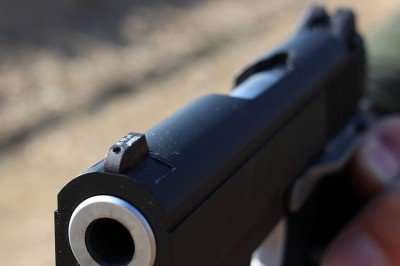
The Trijicon sights are solid, and offer tritium inserts.
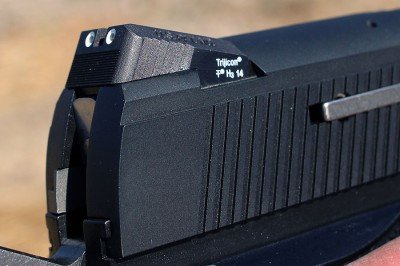
Here I go again. I like rear sights with flat fronts. They make one handed manipulation easier.

Extended slide drop and safety.
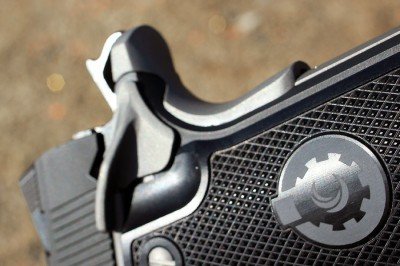
The grip is milled to allow the safety to drop freely.
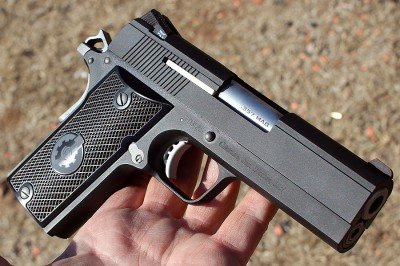
All told, the new Compact is a sharp looking gun.
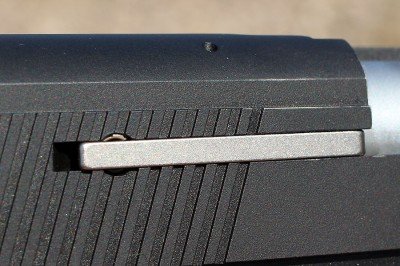
The extractor is long, and works well on the rimmed cases.
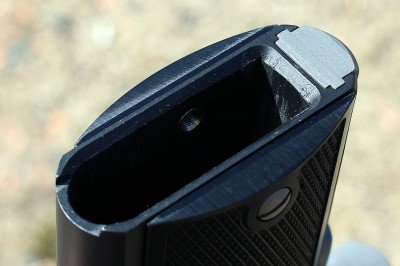
The mag well has a slight bevel, but the compact design keeps it from having a bell flare.
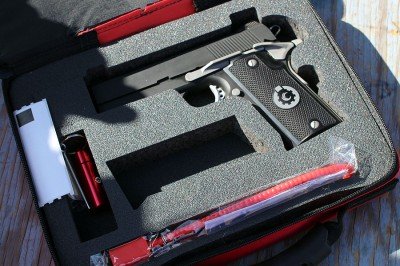
The case that the Coonan comes in is soft-sided, but well padded.
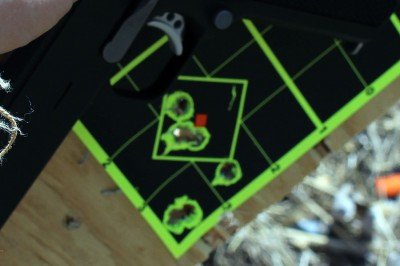
The more I shot, the harder it got to hold all seven in the center. But those first shots were always spot on.
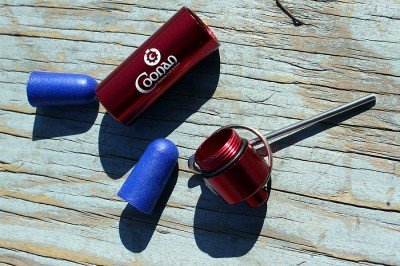
And it comes with rubber bullets, too, in case any Elephant man mob situation kicks off.
